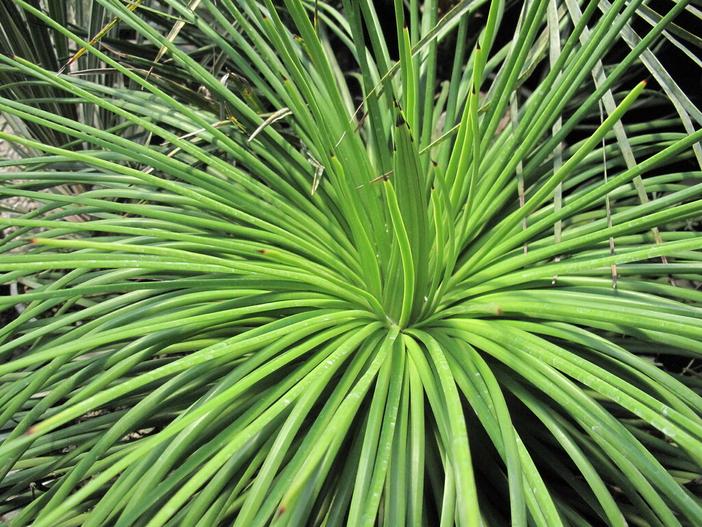Twin Flowered Agave
(Agave geminiflora)
Twin Flowered Agave (Agave geminiflora)
/
/

Megan Hansen
CC BY-SA 2.0
Image By:
Megan Hansen
Recorded By:
Copyright:
CC BY-SA 2.0
Copyright Notice:
Photo by: Megan Hansen | License Type: CC BY-SA 2.0 | License URL: https://creativecommons.org/licenses/by-sa/2.0/ | Uploader: MeganEHansen | Publisher: Flickr




























Estimated Native Range
Summary
Agave geminiflora, commonly known as Twin Flowered Agave, is an evergreen succulent native to the rocky slopes and oak woodlands of Nayarit, Southwestern Mexico. It typically grows to a height and width of 2-3 feet (0.6-0.9 meters). This plant forms a dense rosette of narrow, dark green leaves that are flexible and almost spineless, making it a safer choice for gardens where people or pets may come into close contact with it. The Twin Flowered Agave is particularly noted for its unique flowering stalk, which can reach up to 8 feet tall and bears pairs of yellow and green flowers in the summer. The flowers are quite showy and attract pollinators such as bees and hummingbirds.
The Twin Flowered Agave is drought-tolerant and requires minimal maintenance, making it an excellent choice for xeriscaping and rock gardens. It is also suitable for container gardening due to its compact size. In cultivation, it thrives in full sun to part shade and prefers well-draining soil. While it is generally free of serious pests and diseases, overwatering can lead to root rot. It is not cold-hardy and should be protected from frost. Due to its striking form and ease of care, it is often used as a focal point in succulent collections or as an accent in drought-tolerant landscapes.CC BY-SA 4.0
The Twin Flowered Agave is drought-tolerant and requires minimal maintenance, making it an excellent choice for xeriscaping and rock gardens. It is also suitable for container gardening due to its compact size. In cultivation, it thrives in full sun to part shade and prefers well-draining soil. While it is generally free of serious pests and diseases, overwatering can lead to root rot. It is not cold-hardy and should be protected from frost. Due to its striking form and ease of care, it is often used as a focal point in succulent collections or as an accent in drought-tolerant landscapes.CC BY-SA 4.0
Plant Description
- Plant Type: Succulent
- Height: 2-3 feet
- Width: 2-3 feet
- Growth Rate: Slow
- Flower Color: Yellow
- Flowering Season: Summer
- Leaf Retention: Evergreen
Growth Requirements
- Sun: Full Sun, Part Shade
- Water: Low, Very Low
- Drainage: Fast
Common Uses
Bee Garden, Bird Garden, Border Plant, Drought Tolerant, Fire Resistant, Hummingbird Garden, Potted Plant, Rabbit Resistant, Rock Garden, Showy Flowers, Street Planting
Natural Habitat
Native to the rocky slopes and oak woodlands of Nayarit, Southwestern Mexico
Other Names
Common Names:
Scientific Names: , Agave geminiflora, Tillandsia juncea, Agave boscii, Agave angustissima, Agave geminiflora var. filifera, Agave geminiflora var. filamentosa, Bonapartea flagelliformis, Bonapartea juncea, Dracaena boscii
GBIF Accepted Name: Agave geminiflora (Tagl.) Ker Gawl.